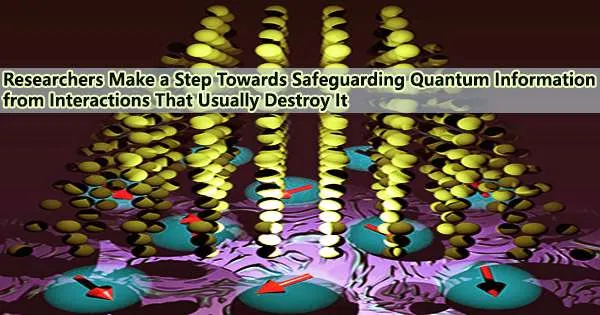Researchers can now predict the behavior of many-body quantum systems related to their surroundings. In order for quantum technology to be used in practical settings, it is essential to find a means to secure quantum information in quantum devices.
Researchers from IAS Tsinghua University in China and Aalto University in Finland describe a novel method for forecasting the behavior of quantum systems, such as groups of particles, when they are connected to the outside world in a work that was published in Physical Review Letters.
Connecting a system, such a quantum computer, to its surroundings typically causes leaks and decoherence, which obliterate all knowledge about what is happening inside the system. Now, the researchers developed a technique which turns that problem into its a solution.
The research was carried out by Aalto doctoral researcher Guangze Chen under the supervision of Professor Jose Lado and in collaboration with Fei Song from IAS Tsinghua. Their approach combines techniques from two domains, quantum many-body physics and non-Hermitian quantum physics.
Protection from decoherence and leaks
Many-body quantum correlations are one of the most fascinating and potent phenomena in quantum systems. Because they support the unusual characteristics of essential elements of quantum computers and quantum sensors, it is crucial to understand these and forecast their behavior.
Predicting the behavior of correlated quantum matter is one of the critical problems for the theoretical design of quantum materials and devices. However, the difficulty of this problem becomes much greater when considering realistic situations in which quantum systems are coupled to an external environment. Our results represent a step forward in solving this problem, providing a methodology for understanding and predicting both quantum materials and devices in realistic conditions in quantum technologies.
Professor Jose Lado
Scientists have made significant progress in predicting quantum correlations when matter is isolated from its environment, but they have yet to succeed in doing so when matter is connected to its environment.
In the latest research, the researchers demonstrated how, under the appropriate conditions, linking a quantum gadget to an external system can be advantageous. When a quantum device is home to so-called non-Hermitian topology, it produces quantum excitations that are robustly safeguarded because of their openness to the outside world.
These open quantum systems could pave the way for revolutionary new approaches to quantum technologies that use external coupling to shield data from decoherence and leaks.
From idealised conditions to the real world
The research develops a new theoretical approach to compute the correlations between quantum particles when they are connected to their surroundings.
“The method we developed allows us to solve correlated quantum problems that present dissipation and quantum many-body interactions simultaneously. As a proof of concept, we demonstrated the methodology for systems with 24 interacting qubits featuring topological excitations,” says Chen.
Professor Lado explains that their approach will help move quantum research from idealised conditions to real-world applications.
“Predicting the behavior of correlated quantum matter is one of the critical problems for the theoretical design of quantum materials and devices. However, the difficulty of this problem becomes much greater when considering realistic situations in which quantum systems are coupled to an external environment. Our results represent a step forward in solving this problem, providing a methodology for understanding and predicting both quantum materials and devices in realistic conditions in quantum technologies,” he says.





